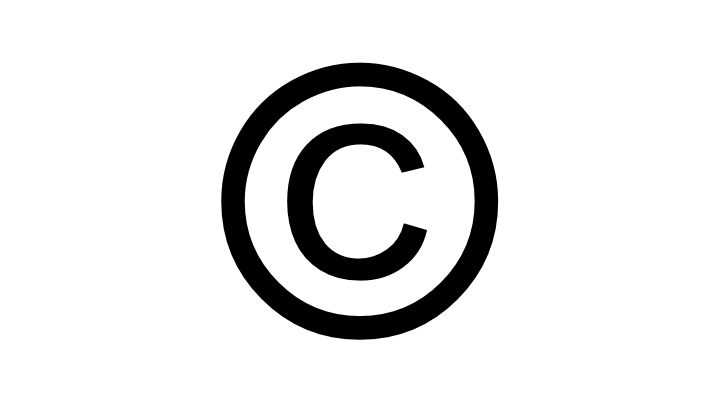Most companies leverage their existing content, re-purposing it in publications, websites, social media, marketing collateral, television, etc. They will similarly rely on this material in whatever new media channels are developed in the future. They may also lend or license this material to external partners such as press outlets: a brand’s success depends upon the strategic use, management, and sharing of its intellectual property.
While a company may primarily rely on material it creates, it is likely also turning to outside sources for supply. This third-party material may include images captured by freelance photographers, videos downloaded from stock houses, and content pulled from public archives.
There is a certain level of risk to lending, licensing and (re)using intellectual property. Digital asset managers can play a key role in mitigating this risk by undertaking an evaluation of the existing ways their companies manage intellectual property and develop a comprehensive digital rights management (DRM) policy.
Does Copyright Protect Our Content?
Once an idea or concept is expressed in a fixed form – such as a digital asset stored on a hard drive – legal protection is automatically provided to the creator. Hence, the creator, also known as the author, owns the exclusive right over their intellectual property, including the right to copy their work. However, it can sometimes be difficult to determine who the creator is in certain contexts. For example, if a staff videographer is asked to shoot an event as part of their job, the hiring company would likely be considered the rightful copyright owner of the resulting images (Mirsky, n.d.). And what about the video captured by a freelancer at the same event? Unless both parties sign a contract that explicitly states that the work is a “work made for hire”, the photographer likely holds the copyright over their work (Ibid.). In these scenarios you may also need to consider other rights-related aspects, such as location and talent shown, music captured during the event, and copyright limitations, such as fair use.
How Rights Licensing Can Help
One way to address copyright’s “gray areas” is through the licensing process. Rights licensing is the act, by a creator, of granting usage rights to their intellectual property to another entity, known as the licensee. These usage rights should be negotiated and ratified prior to asset use. Typically, they are written in clear, albeit legal, language and encapsulated in a license agreement which is signed by both parties. The agreement stipulates aspects of the usage, including who will use the asset, what asset will be used, when it will be used, how it will be used, and where it will be used. It is important to note that each new use not stipulated explicitly in the original agreement must be re-negotiated with the rights holder. Capturing these aspects as rights metadata have a significant affect on how well you mitigate the risk of using intellectual property.
Do Nothing ≠ Option
Rights information must be appended to a digital asset’s record before the material is made available to consumers in a retrieval system. Ideally, this information, or rights metadata, should travel with the digital asset as embedded metadata. Excluding this vital information puts a company (or individual) at risk of copyright law infringement which could result in your website being taken down or wrongful use litigation. Rights management on the web becomes more complicated because web usage is considered worldwide and is therefore beholden to international law. Further, usage rights questions arise when they are ill defined. For example, how do we track and alert users to rights managed works embedded in a much larger compound work? We can help avoid wrongful digital asset use and start protecting our company’s valuable assets by capturing and clearly displaying rights metadata to the users of the systems we help manage.

Introducing Digital Rights Management
Unless you already have one, consider launching a rights management initiative.
- Work with your governance committee (or create one if none exists)
- Know your copyright uses: capture the various types of rights your company acquires, sells, and licenses
- Study the company’s current and anticipated rights workflows
- Familiarize yourself with domestic and international laws and issues
- Understand your company’s licenses and agreements
- Examine and update current rights management procedures
- Raise awareness and garner support from cross-functional team leaders
At the end of the process, whilst collaborating with your company’s lawyer, form a Digital Rights Management (DRM) policy. The process outlined above should help you to understand how best to integrate the newly formed DRM into existing workflows. The goal is simple: to reduce the risk your company assumes by using and storing third-party creative works and to provide security for those valuable digital assets it owns.
If you are interested in learning more about digital rights management and other governance initiatives, please join me in New York, 30-31st January, at the IEN DAM Practitioners’ Summit. I will be speaking about careers in DAM, ways you can expand your skillset, and information governance. Please use discount code M131SPK to receive a 15% discount on registration. https://lnkd.in/gY-Drqt
References
Beer, C., & Goodwin, J. (2016). Rights Management (Chapter 7). In Inform, Transform & Outperform: Digital Content Strategies to Optimize Your Business for Growth (pp. 77–97). Advantage Media Group.
Harris, L. E. (2015, June 14). Best Practices for Copyright Compliance. SLA Click University, Boston, MA.
Mirsky, A. A. (n.d.). Copyright: Authorship, Ownership and Copyright Status – Media Tech Law. Retrieved January 28, 2020, from http://mediatechlaw.mstreetlegal.com/2013/05/20/copyright/
Disclaimer
Tame Your Assets and its authors are not responsible for any errors or omissions, or for the results obtained from the use of this information. All information in this site is provided “as is”, with no guarantee of completeness, accuracy, timeliness or of the results obtained from the use of this information, and without warranty of any kind, express or implied, including, but not limited to warranties of performance, merchantability and fitness for a particular purpose. In no event will Tame Your Assets, its agents, or employees therefore be liable to you or anyone else for any decision made or action taken in reliance on the information on this Site or for any consequential, special, or similar damages, even if advised of the possibility of such damages.





Leave a comment